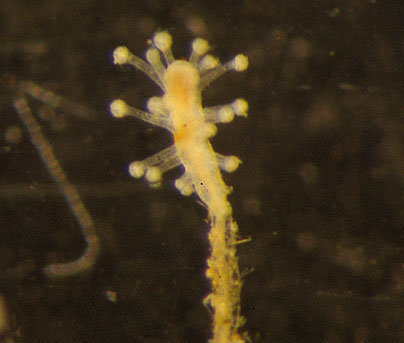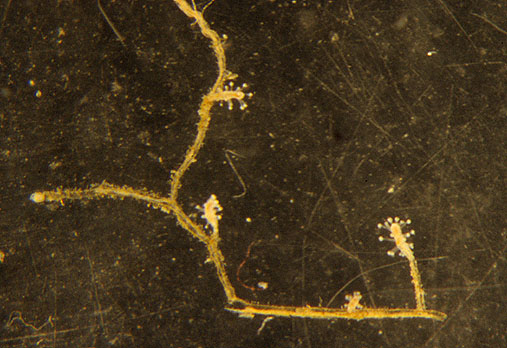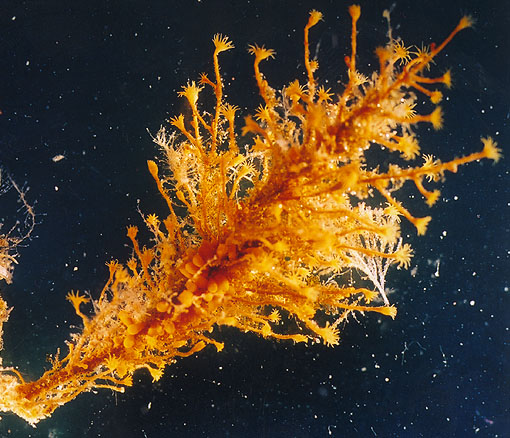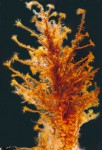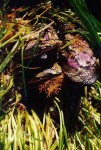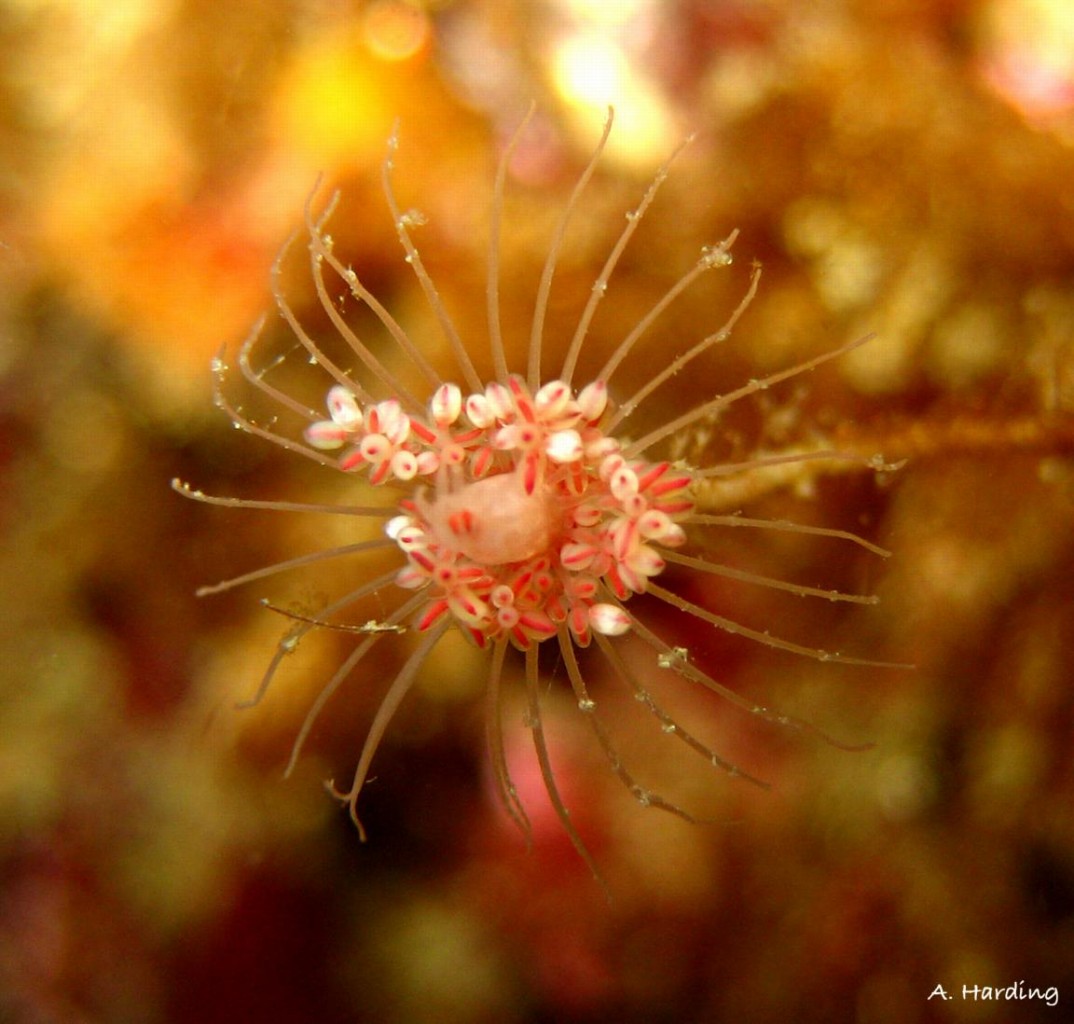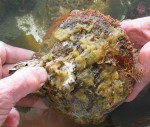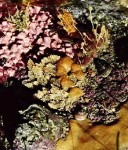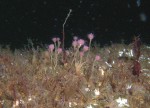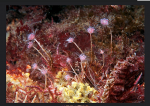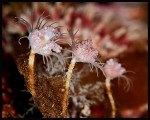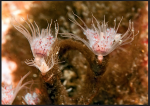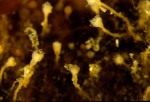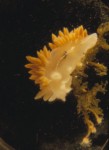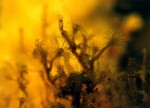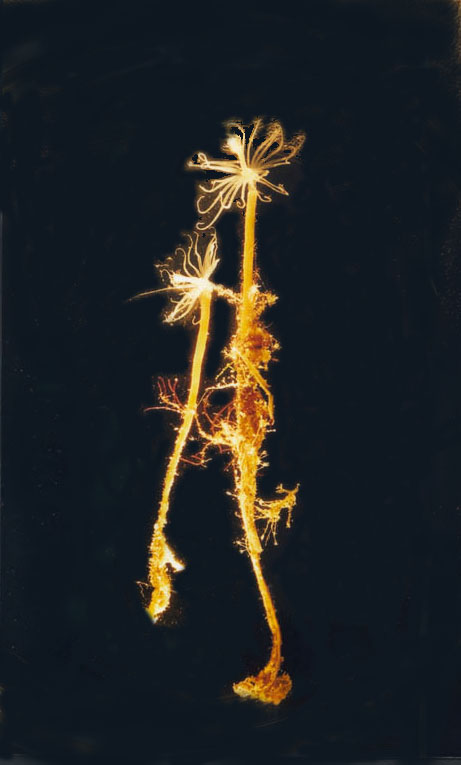 Tubularia regalis Boeck, 1860 (family Tubulariidae).
Tubularia regalis Boeck, 1860 (family Tubulariidae).
This large Tubularia with a stem up to 20 cm was originally described from Northern Norway. It was later found to be a circumpolar species, with records from Greenland , Bering Sea and Sea of Okhotsk. The present record from Swordfish Island, Juan de Fuca Strait, is the most southern record of this species, and the first from the Canadian Pacific coast.The stems of this species are often host to other hydroid species.
This clip profiles the Pearson College Divers and the invertebrates of a cave on an island a kilometer from Race Rocks. The hydroid species, Tubularia sp. shown near the end of the video is a rare species, which according to Dr. Anita Brinckmann-Voss has so far been found in only two locations; here and in Norway. Note it is growing in association with colonial ascidians. We have observed this species here over the last twenty years. It is very limited in distribution, with no more than one or two polyps appearing at any one time. It’s height is 15 cm. Video taken by Pearson College Divers, edited by GF.
-
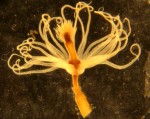
-
Tubularia regalis
-
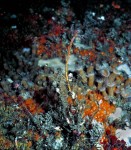
-
This photo is by Dr.A.Svoboda
| Domain |
Eukarya |
| Kingdom |
Animalia |
| Phylum |
Cnidaria |
| Class |
Hydrozoa |
| Order |
Anthoathecatae |
| Family |
Tubulariidae |
| Genus |
Tubularia |
| species |
regalis, Brook 1860 |
This file is provided as part of a collaborative effort by Lester B. Pearson College and local scientists. Copyrighted 1999–All Images on this page are the property of: Dr. Anita Brinckmann- Voss. . They can not be used or modified without her written permission.





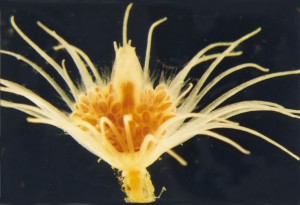
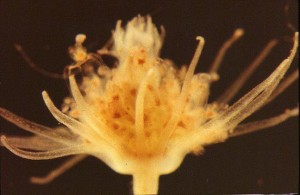
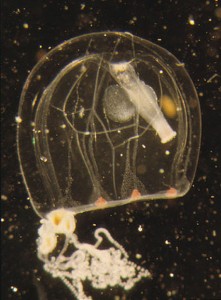



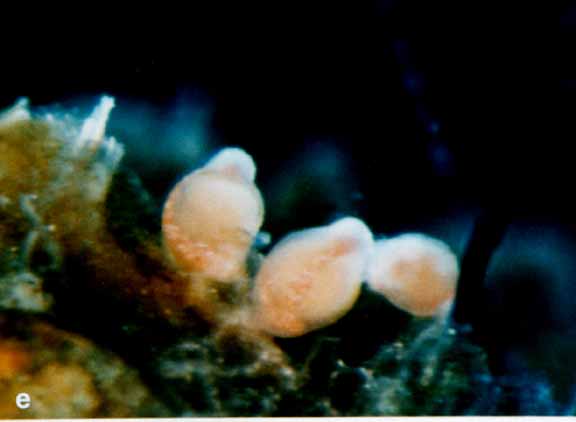
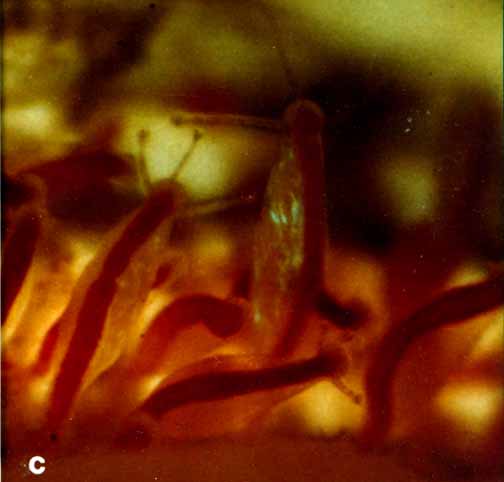
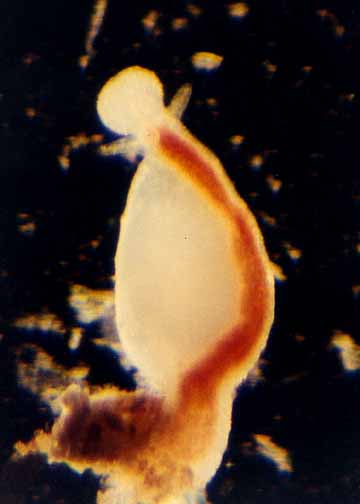 Rhysia fletcheri male polyps
Rhysia fletcheri male polyps


